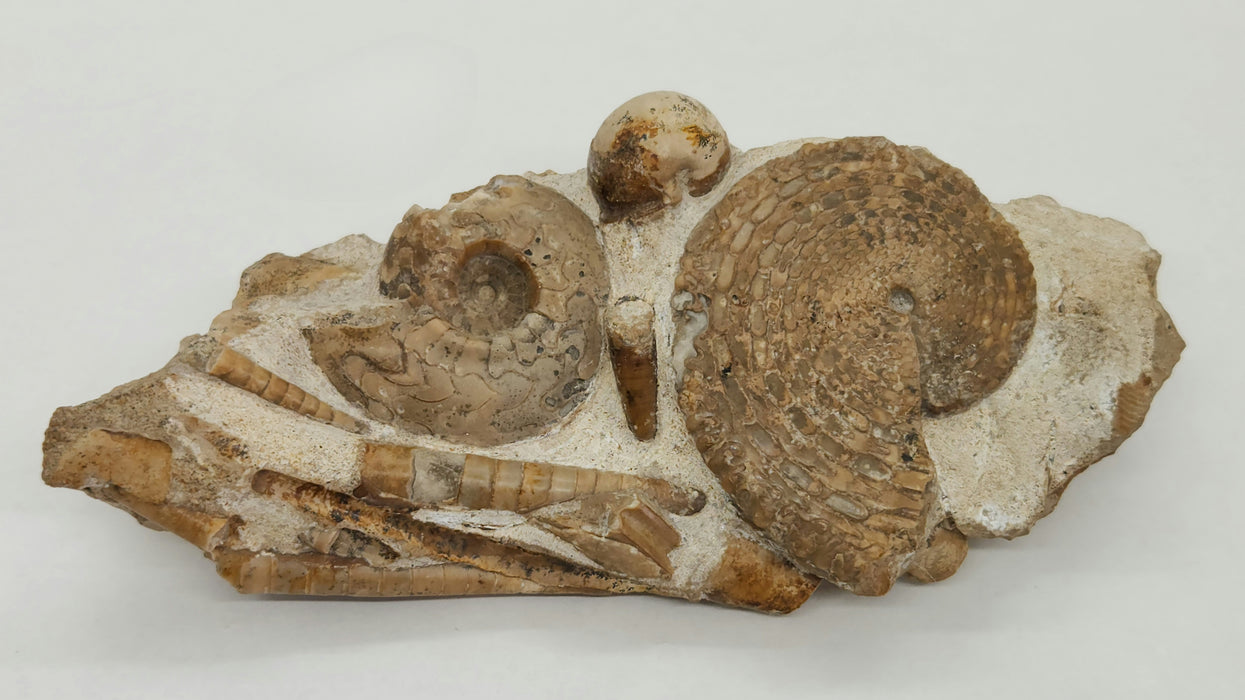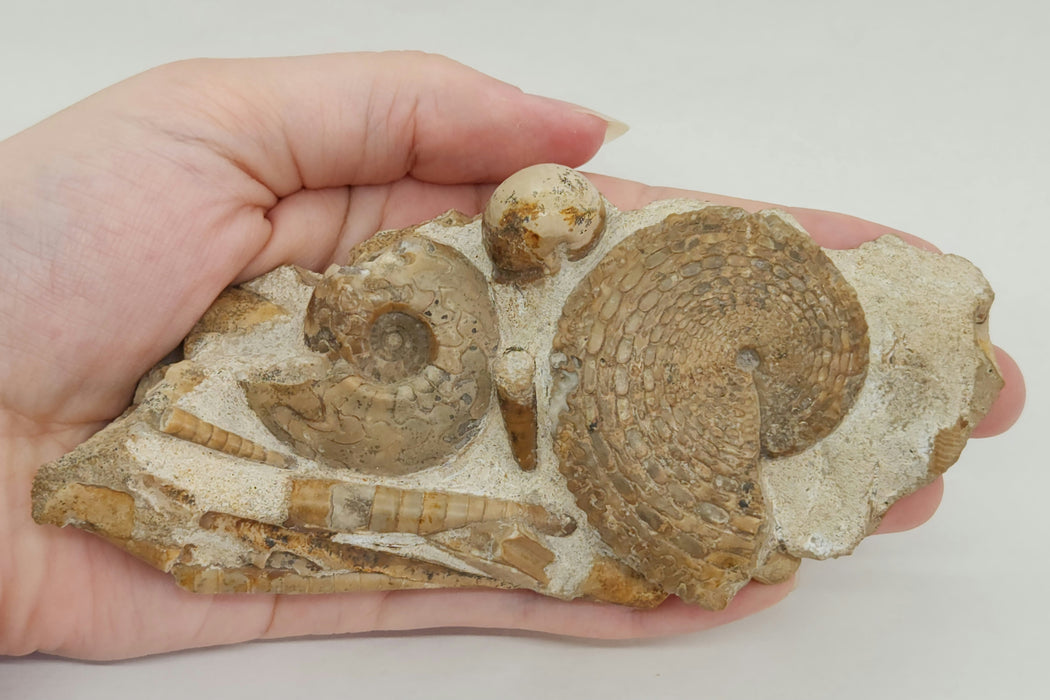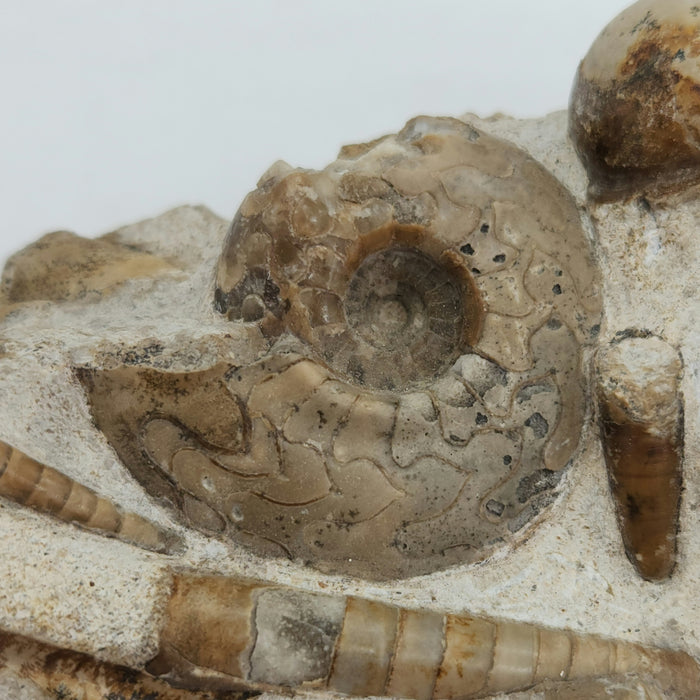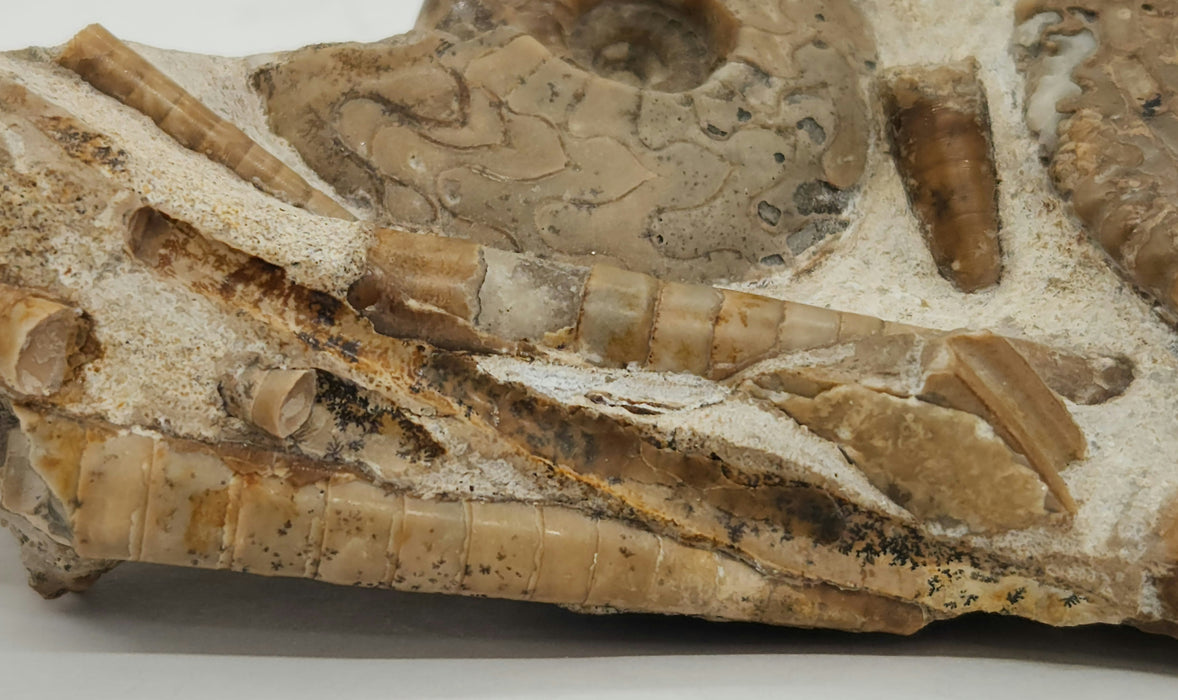
Fossil Ammonites & Orthocones Cluster | Kazakhstan
Specimen approx. size: 5.75" x 3" x 1.75"
Medlicottia approx. size: 2.25" x 2"
Uraloceras approx. size: 1.5" x 1.25"
This specimen features shells of multiple cephalopods, with a focus on the larger Medlicottia orbignyana and the slightly smaller Uraloceras ammonites. Most of the outer shells of these ammonites have worn away, revealing the fascinating patterns of the inner shell sutures.
Ammonoids are a group of extinct marine mollusk animals in the subclass Ammonoidea of the class Cephalopoda. These mollusks, commonly referred to as ammonites, are more closely related to living coleoids (i.e., octopuses, squid, and cuttlefish) than they are to shelled nautiloids such as the living Nautilus species. The earliest ammonites appear during the Devonian, and the last species vanished in the Cretaceous–Paleogene extinction event.
Orthocone cephalopods also commonly identified as Orthoceras sp. are an extinct cephalopod that used jet propulsion to swim and hunt the seas for food. They are characterized by long straight conical shells that protect the siphuncle. The siphuncle is a tube that runs the entire length of the shell, through each of the chambers. This tube had two functions. Once filled with water, the nautiloid could force the water out, propelling itself backward with a kind of jet propulsion.




